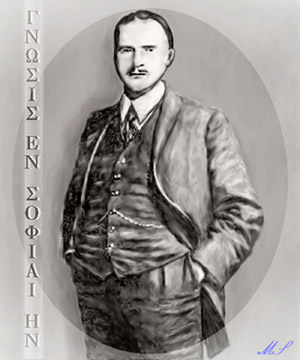The term writer’s block was first coined in New York City in 1947 by Edmund Bergler, a well-known disciple of Sigmund Freud.
Bergler, an Austrian psychiatrist called writer’s block a form of “psychic masochism, the unconscious wish to defeat one’s conscious aims, and to enjoy that self-constructed defeat.” He blamed the subconscious, as any student of Freud might, claiming that writers who struggled with the malady were experiencing a need to recreate the hunger of a childhood filled with deprivation, and felt that writer’s block was merely a need to feel hungry once again. Bergler is credited with having cured all of the more than forty writers who sought his treatment. That didn’t mean he thought they were returned to legitimacy. “I have never seen a ‘normal’ writer,” he explained. Writers are “entirely surrounded by neuroticism in private life.”

Carl Jung said, “Modern Man cannot see God because he won’t look low enough.”
Jung described how he broke through a blocked state of mind in what he called a “confrontation with the unconscious,” by opening his heart to welcome the “magical child” as a grown man, when he began playing with building blocks again as he had done at the age of ten or eleven.
“Aha,” I said to myself, “there is still life in these things. The small boy is still around, and possesses a creative life which I lack. But how can I make my way to it?” For as a grown man it seems impossible to me that I should be able to bridge the distance from the present back to my eleventh year…the building game was only the beginning. It released a stream of fantasies which I later carefully wrote down. This sort of thing has been consistent with me, and at any time in my later life when I came up against a blank wall, I painted a picture of hewed stone.”
– C.G. Jung, Memories, Dreams, Reflections
The same might be said about playing a card game. The history of the Tarot dates back to the late 14th century. It was highly regarded by Carl Jung who recognized the Tarot as depicting archetypes of transformation like those he had found in myths and dreams. He believed that the Tarot provides a method of divination like the I-Ching, and that anyone could use this “intuitive method” to reach into the collective unconscious and create a “cloud of cognition” to discover meaning in past, present, and forthcoming situations. Read more about Jung and the Tarot in Mary K. Greer’s Tarot Blog.
The Tarot provides a compass, frequently pointing out directions to sailors lost in a sea of words.
Writers are continually navigating through time and changes. You can ask the Tarot for answers to focused questions about the process of your writing like:
- What is this character trying to achieve?
- My protagonist is at a turning point. What happens next?
- What is missing in this scene?
- What obstacle is about to appear?
We provide the first step in learning to use the Tarot for writing by providing an online set of the 22 cards that appear face down in a continuously randomized deck. Let the process of intuition provide answers by drawing a random card from the Major Arcana. Formulate your question first, but avoid asking questions with a yes or no answer. Then, simply touch any card to flip it over to look at the picture on the card. Consider how the image speaks to you. What thoughts does it stir in your imagination? Begin writing. If you need more information, scroll down to the bottom of the page for the Jungian description of the card you turned.
FURTHER ONLINE REFERENCES:
- Why Are Writers Particularly Drawn to Tarot?
- Carl Jung and Jungian Archetypes in the Tarot: The Various Aspects of Our Selves
- Writing with Tarot: How the Cards Point the Way to Your Story
- Carl Jung: Tarot Cards Provide Doorways to the Unconscious, and Maybe a Way to Predict the Future
